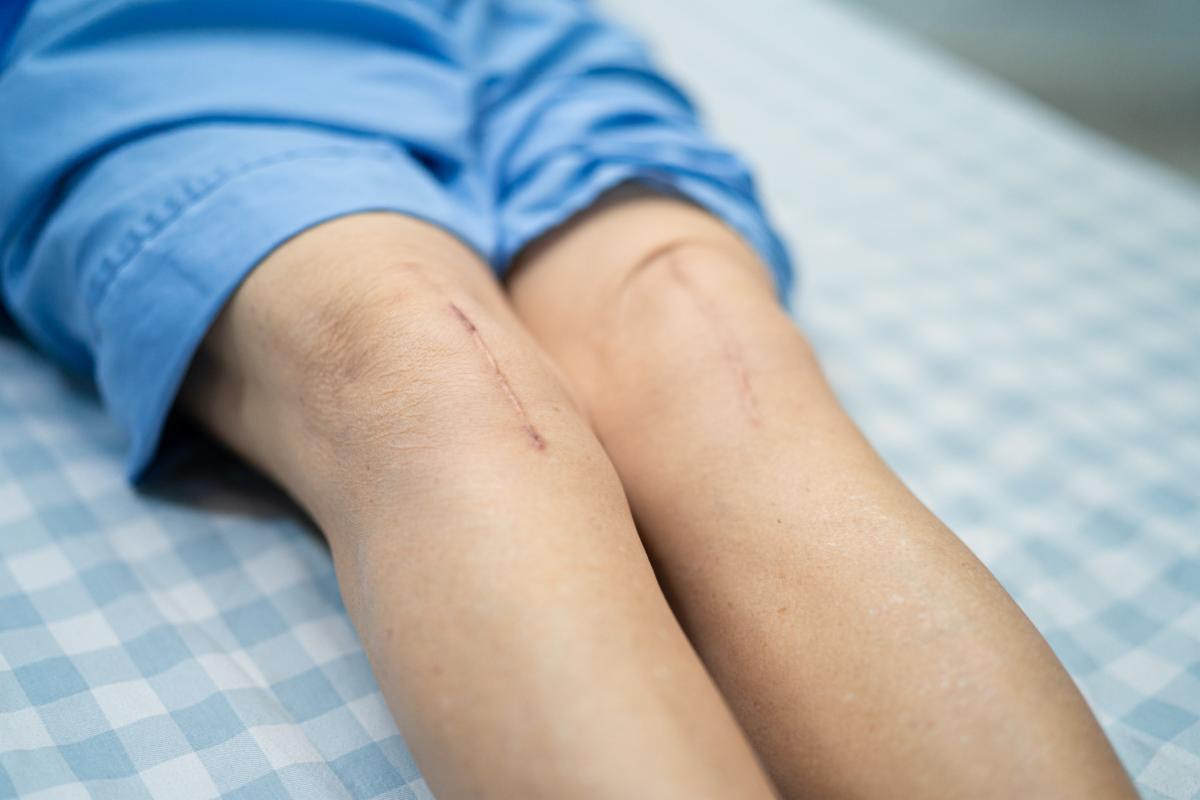Knee Replacement? Still Have Pain, Stiffness, or Feel Weak?
The theme for this week …
Oh, the many ways that medical procedures can get our muscles confused!
This week we zero in on a popular topic on our YouTube channel — knee replacement recovery beyond the flex and extend goals of typical rehab. Bridging® addresses some often overlooked muscle interconnections around the knee. Read on …
Insight of the week from Cara
Do you have Total Knee Replacement (TKR) recovery pain, stiffness, or weakness?
Are you one of the 790,000 individuals per year having a total knee replacement this year?
There have been many improvements to both the procedure and the artificial joint materials over the past 20 years. Replacement has become routine and is a common surgery for those over the age of 60.
Here is a summary of trends and changes. Yet, for all these changes, post-surgery function can still be less than many hoped for.
Some of the most common complaints after their TKR?
The top search phrases used in Google related to TKR issues, even months later, are:
- residual pain
- stiffness/tightness
- weakness
If you experience any of these, chances are your recovery is stuck. When that happens, your ortho will often offer more therapy or a revision procedure.
What we find needs a reset
At The Bridging® Institute we find three distinct aspects of knee functionality need help beyond exercise. When these muscle relationships change, so does your pain, stiffness, and weakness.
The three functional aspects all involve re-establishing muscle relationships that functionally link across the knee.
- Quads: Linking the ankle and patellar tendon so stepping activates the quadriceps muscles.
- Hamstrings: Linking the hamstrings to the tendon below the knee so that ankle movement activates hamstrings.
- Multi-joint spiral transitions: Linking turns between the ankle, a subtle rotation at the knee, and the hip. This enables the motion used in squatting, a foundational movement of life.
How can Bridging® help?
If you’ve had a TKR, Bridging® specifically supports and guides the disrupted muscle relationships so they can reset. Once reset, the stability of your knee improves, the tension relaxes, and your strength can fire-up.
Often this is a two-session process. One for the basics, and the second for fine-tuning.
Case Study: Lisa’s TKR recovery boost
Lisa had her knee replaced 6 weeks earlier. Her recovery is going well, and she is looking forward to playing tennis this fall.
We had worked together prior to her knee replacement so I wanted to see how she was progressing, and if there was some fine-tuning to enhance her current function. In addition, she was having some low back pain.
What did we find?
The three common ankle/knee/thigh relationships that exercise can’t easily reset all needed some guidance to re-engage.
How did Bridging® help?
In the video you will see the following muscle relationships being reset one-by-one:
- The ankle-patellar tendon link that activates the quadriceps.
- The above/below, and front/back relationship of the hamstrings connecting to the tibia and fibula.
- The spiral transition of the leg which crosses the knee when doing a squat-like motion.
More needed help than her knee
Overall, Lisa gained strength and stability from the fine-tuning shown in the video. In addition, we were able to re-center the rotation of her pelvis. This was likely impacted by the poor biomechanics from when she was in pain, prior to the replacement surgery.
We also looked at how her foot movement linked to her ankle and leg. Again, the way she had put pressure on it likely created stress before the surgery.
The lower back and foot pains were better by the end of the video.
Checking in a couple weeks later, her lower back and knee are doing great! She is now working on foot function that was affected by the compromised knee, and additional strengthening of her leg.
What can you do to help your knee more fully recover?
Bridging® is your go-to for quickly calming and resetting disrupted muscles. This fast help comes from two differentiating factors:
- Problem-solving: Taking the time to find the root cause of why your foot, knee, hip or low back is bothering you. It might be unrelated to the TKR!
- Muscle reset process: The gentle rocking and stretching motion Bridging uses, resets your muscle memory.

